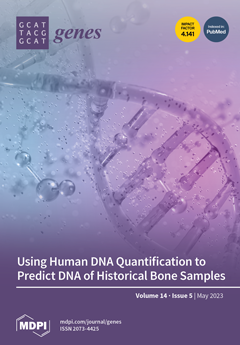Background: The prominent insertion/deletion polymorphism in the gene for the major modulator of tissue perfusion, angiotensin-converting enzyme (
ACE-I/D) is associated with variability in adjustments in cardiac and skeletal muscle performance with standard forms of endurance and strength type training. Here, we tested whether the
ACE-I/D genotype would be associated with variability in the effects of interval-type training on peak and aerobic performance of peripheral muscle and cardio-vasculature and post-exercise recovery.
Methods: Nine healthy subjects (39.0 ± 14.7 years of age; 64.6 ± 16.1 kg, 173.6 ± 9.9) completed eight weeks of interval training on a soft robotic device based on repeated sets of a pedaling exercise at a matched intensity relative to their peak aerobic power output. Prior to and post-training, peak anaerobic and aerobic power output was assessed, mechanical work and metabolic stress (oxygen saturation and hemoglobin concentrations of Musculus vastus lateralis (VAS) and Musculus gastrocnemius (GAS), blood lactate and factors setting cardiac output such as heart rate, systolic and diastolic blood pressure were monitored during ramp-incremental exercise and interval exercise with the calculation of areas under the curve (AUC), which were put in relation to the produced muscle work. Genotyping was performed based on I- and D-allele-specific polymerase chain reactions on genomic DNA from mucosal swaps. The significance of interaction effects between training and
ACE I-allele on absolute and work-related values was assessed with repeated measures ANOVA.
Results: Subjects delivered 87% more muscle work/power, 106% more cardiac output, and muscles experienced ~72% more of a deficit in oxygen saturation and a ~35% higher passage of total hemoglobin during single interval exercise after the eight weeks of training. Interval training affected aspects of skeletal muscle metabolism and performance, whose variability was associated with the
ACE I-allele. This concerned the economically favorable alterations in the work-related AUC for the deficit of SmO
2 in the VAS and GAS muscles during the ramp exercise for the I-allele carriers and opposing deteriorations in non-carriers. Conversely, oxygen saturation in the VAS and GAS at rest and during interval exercise was selectively improved after training for the non-carriers of the I-allele when the AUC of tHb per work during interval exercise deteriorated in the carriers. Training also improved aerobic peak power output by 4% in the carriers but not the non-carriers (
p = 0.772) of the
ACE I-allele while reducing negative peak power (−27.0%) to a lesser extent in the
ACE I-allele carriers than the non-carriers. Variability in cardiac parameters (i.e., the AUC of heart rate and glucose during ramp exercise, was similar to the time to recovery of maximal tHb in both muscles after cessation of ramp exercise, only associated with the
ACE I-allele but not training per se. Diastolic blood pressure and cardiac output during recovery from exhaustive ramp exercise demonstrated a trend for training-associated differences in association with the
ACE I-allele.
Discussion: The exercise-type dependent manifestation of antidromic adjustments in leg muscle perfusion and associated local aerobic metabolism between carriers and non-carriers of the
ACE I-allele with the interval-training highlight that non-carriers of the I-allele do not present an essential handicap to improve perfusion-related aerobic muscle metabolism but that the manifestation of responsiveness depends on the produced work.
Conclusions: The deployed interval-type of exercise produced
ACE I-allele-related differences in the alterations of negative anaerobic performance and perfusion-related aerobic muscle metabolism, which manifestation is exercise specific. The training-invariant
ACE I-allele-associated differences in heart rate and blood glucose concentration emphasize that the repeated impact of the interval stimulus, despite a near doubling of the initial metabolic load, was insufficient to overturn
ACE-related genetic influences on cardiovascular function.
Full article






